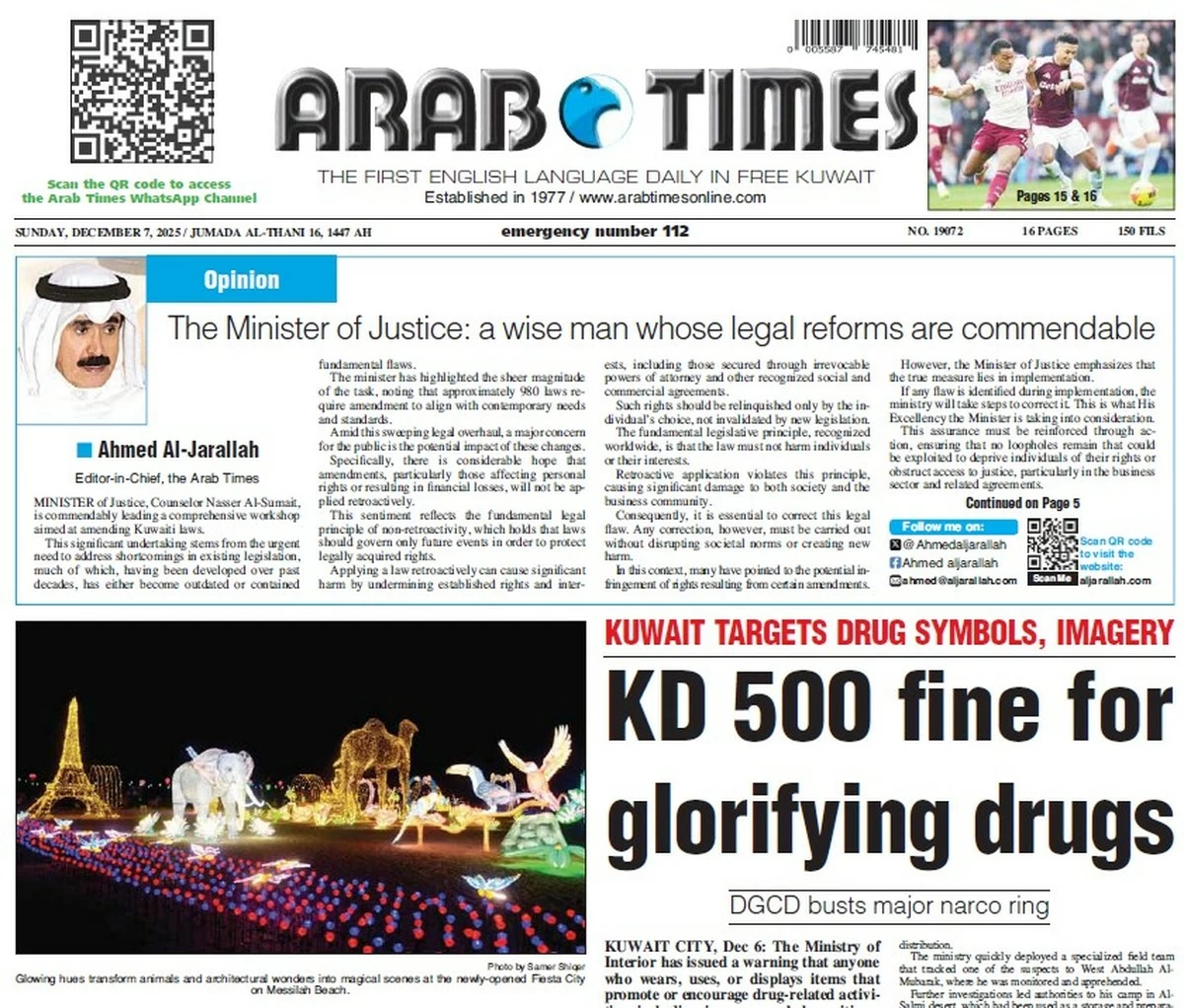20/09/2025
20/09/2025

KUWAIT CITY, Sept 20: Kuwait City ranked among the top 10 most polluted cities globally on September 19, 2025, as air quality plummeted to hazardous levels, driven by high concentrations of dust and industrial emissions. At 11:30 AM local time, the Air Quality Index (AQI) surged above 200, categorizing the air as “very unhealthy” with fine particulate matter (PM2.5) dominating the pollution mix.
Authorities and health experts warned residents to avoid outdoor activities, use air purifiers indoors, wear masks outdoors, and seal homes to minimize exposure. Vulnerable groups — including children, the elderly, and those with respiratory or cardiovascular conditions — face heightened risks of health complications from the severe air pollution.
Kuwait City’s AQI spike was significant, with PM2.5 levels recorded at nearly 30 times the World Health Organization’s annual safety guideline. This episode represents nearly five times the city’s 2024 average PM2.5 concentration of 30.2 µg/m³, which corresponds to a “moderate” AQI of 88.
Neighboring areas, including Al Jahra, were similarly affected by the poor air quality. Experts forecast gradual improvement starting late Saturday evening, with AQI levels expected to drop to around 131 and continue easing below 120 by Sunday as stronger winds disperse the pollutants. However, fluctuations may persist due to ongoing heat, dust storms, and stagnant atmospheric conditions.
The air quality crisis in Kuwait is primarily attributed to emissions from the oil sector—covering extraction, combustion, and transport—as well as vehicular exhaust and industrial emissions. Urban growth and construction contribute significant dust particles, further deteriorating the air. Climate factors such as intense sunlight and heat lead to photochemical pollution, while low wind speeds trap pollutants near the surface.
Additionally, northerly winds have transported pollution from industrial zones in neighboring countries like Iraq, compounding Kuwait’s pollution burden, but not enough to alleviate the accumulation locally.
Kuwait’s pollution woes are mirrored across the Gulf Cooperation Council (GCC) region, where several cities regularly rank among the world’s most polluted. Cities like Riyadh, Saudi Arabia, and Doha, Qatar, often report high PM2.5 levels during dust storm seasons and intense industrial activity.
According to recent data, cities in the GCC consistently face “unhealthy” to “very unhealthy” air quality categories, with factors ranging from fossil fuel emissions, rapid urbanization, to natural dust storms common in the arid climate. These conditions pose ongoing public health challenges, with governments increasingly investing in monitoring systems and pollution control measures.
Health officials urge residents across Kuwait and the GCC to remain vigilant during pollution spikes, advising limited outdoor exposure, especially for sensitive groups. Environmental agencies in the region are collaborating to address cross-border pollution through stricter emissions standards and green infrastructure development.
Kuwait has begun exploring measures such as expanding green urban spaces and adopting cleaner energy technologies to mitigate pollution. Meanwhile, regional cooperation on air quality management remains crucial, with joint efforts aimed at tackling dust storms and industrial emissions.
Experts emphasize that while the immediate pollution episode is expected to improve with changing weather, long-term solutions require addressing industrial emissions, traffic pollution, and urban dust sources comprehensively. With climate change potentially increasing the frequency of dust storms and heatwaves, the GCC’s battle with air quality remains a pressing environmental and public health priority.


